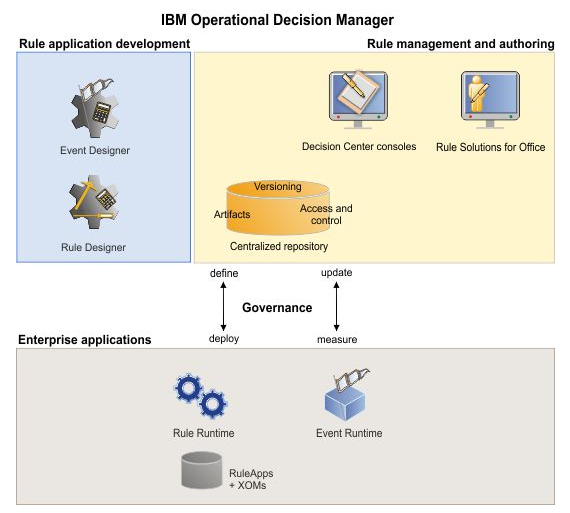Operational Decision Manager includes two main components:
Decision Server for managing decisions and detecting events
Decision Server provides the runtime and development components to automate the response of highly variable decisions based on the specific context of a process, transaction, or interaction. You can monitor a business network to discover and take action on event-based data patterns, and then process this information against hundreds or even thousands of business rules in order to determine how to respond within front-end and back-end systems.
Decision Center for putting decision management in the hands of those who drive the business
With Decision Center, business users can manage decisions and events directly based on organizational knowledge and best practices, with limited dependence on the IT department. The degree of dependence can range from a limited review by business users of the business logic implemented by developers, to complete control over the specification, creation, testing, and deployment of the business logic by business users. Business and IT functions can work in collaboration, aligning the entire organization in the implementation of automated decisions and accelerating the maintenance lifecycle as they evolve based on new external and internal requirements.
The following figure shows the components that Operational Decision Manager provides for rule application development, rule management and authoring, and the execution environment.



 RSS Feed
RSS Feed



